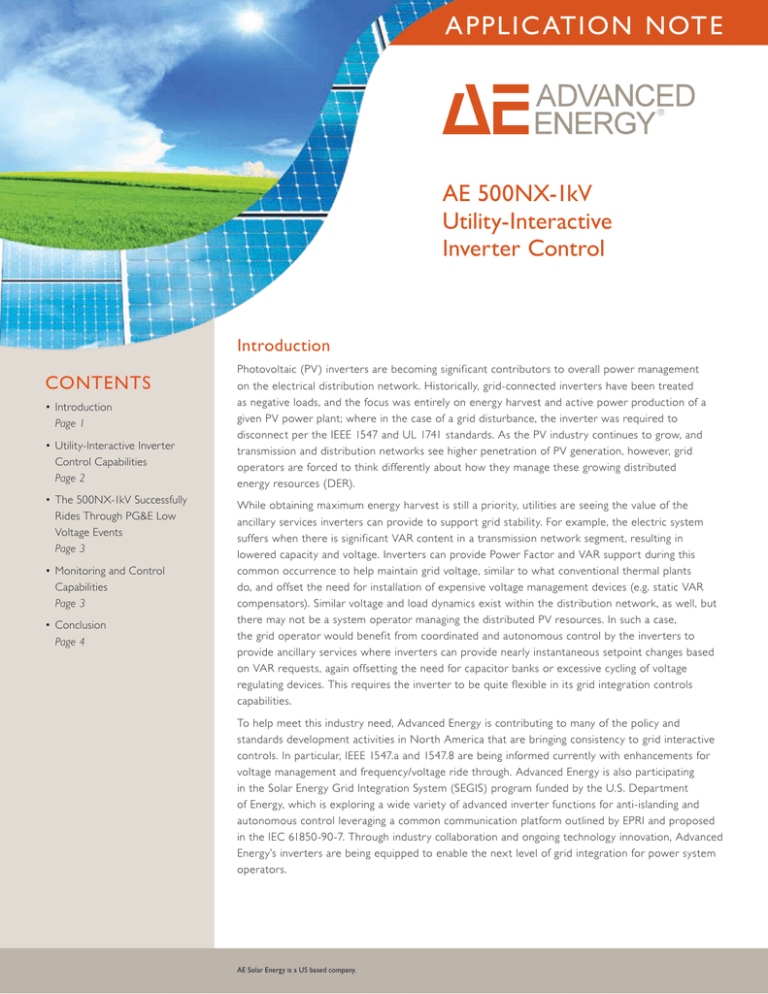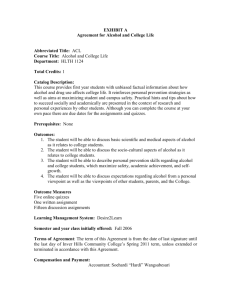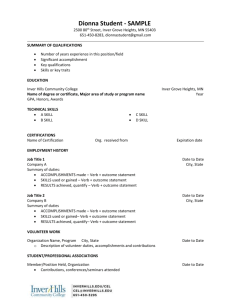
APPLIC ATION NOTE
AE 500NX-1kV
Utility-Interactive
Inverter Control
Introduction
CONTENTS
•Introduction
Page 1
•Utility-Interactive Inverter Control Capabilities
Page 2
•The 500NX-1kV Successfully Rides Through PG&E Low Voltage Events
Page 3
•Monitoring and Control Capabilities
Page 3
•Conclusion
Page 4
Photovoltaic (PV) inver ters are becoming significant contributors to overall power management
on the electrical distribution network. Historically, grid-connected inver ters have been treated
as negative loads, and the focus was entirely on energy harvest and active power production of a
given PV power plant; where in the case of a grid disturbance, the inver ter was required to
disconnect per the IEEE 1547 and UL 1741 standards. As the PV industry continues to grow, and
transmission and distribution networks see higher penetration of PV generation, however, grid
operators are forced to think differently about how they manage these growing distributed
energy resources (DER).
While obtaining maximum energy harvest is still a priority, utilities are seeing the value of the
ancillary services inver ters can provide to suppor t grid stability. For example, the electric system
suffers when there is significant VAR content in a transmission network segment, resulting in
lowered capacity and voltage. Inver ters can provide Power Factor and VAR suppor t during this
common occurrence to help maintain grid voltage, similar to what conventional thermal plants
do, and offset the need for installation of expensive voltage management devices (e.g. static VAR
compensators). Similar voltage and load dynamics exist within the distribution network, as well, but
there may not be a system operator managing the distributed PV resources. In such a case,
the grid operator would benefit from coordinated and autonomous control by the inver ters to
provide ancillary services where inver ters can provide nearly instantaneous setpoint changes based
on VAR requests, again offsetting the need for capacitor banks or excessive cycling of voltage
regulating devices. This requires the inver ter to be quite flexible in its grid integration controls
capabilities.
To help meet this industry need, Advanced Energy is contributing to many of the policy and
standards development activities in Nor th America that are bringing consistency to grid interactive
controls. In par ticular, IEEE 1547.a and 1547.8 are being informed currently with enhancements for
voltage management and frequency/voltage ride through. Advanced Energy is also par ticipating
in the Solar Energy Grid Integration System (SEGIS) program funded by the U.S. Depar tment
of Energy, which is exploring a wide variety of advanced inver ter functions for anti-islanding and
autonomous control leveraging a common communication platform outlined by EPRI and proposed
in the IEC 61850-90-7. Through industry collaboration and ongoing technology innovation, Advanced
Energy’s inver ters are being equipped to enable the next level of grid integration for power system
operators.
AE Solar Energy is a US based company.
APPLIC ATION NOTE
Utility-Interactive Inverter Control
Capabilities
The AE 500NX-1kV inver ter currently provides Advanced
Energy’s most comprehensive suite of utility interactive
controls to enable grid suppor t functions and ancillary
services. These capabilities include controls for active power
(kW) with associated ramp rates during transitions, reactive
power (kVAR), power factor (PF), and configurable voltage
and frequency trip points. To access these control functions,
operators have the choice of configuring the inver ter directly,
or integrating the inver ter’s grid suppor t functions on existing
SCADA and Distribution Management Systems using published
communications specifications.
The AE 500NX-1kV inver ter currently suppor ts the following
grid suppor t controls, all of which are flexible in their
configuration.
Active Power Curtailment specifies an upper limit for
inver ter active power (kW or P) output. When the output of
the PV array at its maximum power point exceeds the power set
point, the Active Power Cur tailment control increases the PV
voltage to reduce the power output of the array.
Maximum Generation Limit
Active Power Ramp Rate defines the rate at which the
active power production by the inver ter ramps up or down,
limited by the available DC power output of the array.
we
o
tP
n
are
p
Ap
A)
V
(
r
θ
Reactive
Power
(VAR)
Real Power (W)
Power Factor = cos (θ)
Figure 2 - The power triangle above represents the relationship
between apparent power, real power, and the resulting reactive
power.
Power Factor Ramp Rate defines the rate at which the
inver ter transitions between different power factor set-points.
Voltage Ride Through – The AE 500NX-1kV has the
capability to ride through a wide range of voltage excursions.
This control enables configuration of the desired window
of operation under zero, low, and high voltage ride through
conditions. The graph below shows the range of the AE
500NX-1kV (red line), as well as a few of the prominent
regulatory trip curves mandated throughout the US.
100%
80%
Example Actual Output
Time
Figure 1 - Shown here is the transition between maximum
active power set points and the associated ramp rate.
Reactive Power Control sets the level of reactive power
(kVAR or Q) generation or consumption, and operates within
the constraints of the inver ter’s power envelope and current
irradiance conditions. The AE 500NX-1kV has a total capacity of
±165kVAR (subject to array and grid conditions).
Figure 3 - The VRT window for the AE 500NX-1kV inverter
supports multiple regional profiles.
Reactive Power Ramp Rate defines the rate at which the
reactive power production by the inver ter transitions between
set-points.
Frequency Ride Through – The AE 500NX-1kV also
has the capability to ride through both high and low variations
in frequency, suppor ting a range from 63 Hz to 57 Hz with
configurable trip limits to meet various regulatory requirements.
Power Factor (PF) Control sets the ratio of real power
to apparent power, allowing for sourcing or sinking of VARs to
maintaining voltage and increase efficiency in the power system.
The AE 500NX-1kV is capable of ±0.90 PF (subject to array and
grid conditions).
Page 2
APPLIC ATION NOTE
The AE 500NX-1kV Successfully Rides
Through PG&E Low Voltage Events
Thir ty AE 500NX-1kV inver ters at PG&E’s 15 MW Westside
Solar Station endured four separate low voltage events caused
by momentary phase-to-phase faults on a 12 kV circuit fed from
the same substation that serves as the interconnect for the solar
station near Fresno, California. The oscillography traces from
a relay showed a nearly 50 percent voltage depression at the
12 kV bus for approximately 7 cycles. During these events, the
inver ters were operating at between 20 percent and 80 percent
of full power, and all remained online, confirming the successful
functioning of the low-voltage ride through capability.
•PF/VAR control
•Active power limit
50
•Ramp rate
0
•Enable/disable
-50
•Inver ter operating data aggregation
IB
IC
VA(kV)
VB(kV)
VC(kV)
•Single point of access for SCADA and 3RD par ty Data Acquisition Systems (DAS)
5
0
Provided by PG&E
IA IB IC
Some of the specific group commands and functions that the
IMC could provide are:
IA
VA(kV VB(kV) VC(kV)
To optimize inver ter communications and monitoring within the
plant, an Inver ter Master Controller (IMC) may be utilized to
provide the SCADA system a single point of access to multiple
inver ters. The IMC enables the operator to issue a single
command to a fleet of inver ters for repeatable and reliable
operation of the plant. In addition to inver ter control, the IMC
can serve as a data concentrator for various stakeholders of the
plant to enable secure data transfer using a variety and industrystandard communications protocols, such as Modbus, DNP,
and/or IEC 61850.
-5
2.5
5.0
7.5
10.0
12.5
15.0
Utility SCADA
3rd Party DAS
Cycles
Figure 4 - Voltage and current plot from the SEL relay at Westside
Solar Station. This plot confirms that the AE 500NX-1kV inverters
on the site successfully rode through the low voltage event.
Meters
Breakers
Trackers
IMC
Monitoring and Control Capabilities
Inver ters are typically required to be controlled by a SCADAtype solution in utility applications. This enables plant operators
to control inver ters based on the requirements of their
interconnection agreement, while managing their asset similar to
other forms of generation. SCADA systems suppor t a number of
different communications protocols, and are comprised of several
layers, making them fairly complex to navigate. To easily manage
system integration, Advanced Energy provides several options for
operators to efficiently interface with the inver ter(s).
Example Pad 1
Example Pad ##
Figure 5 - The IMC simplifies the integration process by providing
a single point of connectivity to monitor and control multiple
inverters.
In addition, the Advanced Energy NX line of inver ters provides
a robust monitoring and controls interface that enables plant
operators and O&M contractors to access performance data and
the inver ter control functions.
As a standard feature, all Advanced Energy inver ters suppor t
Modbus as a native communications protocol, accessible through
either Modbus TCP over an Ethernet network or Modbus RTU
utilizing an RS-485 serial connection. Modbus is a time-tested,
widely adopted industrial communications protocol that enables
supervisory monitoring and control systems to communicate with
inver ters, and other devices. The Modbus maps are published in
the inver ter’s manual, providing the SCADA engineer everything
needed to configure the system to monitor and control the inverter.
Page 3
APPLIC ATION NOTE
Conclusion
As noted in the Introduction, the integration challenges involved are neither inherent to DER,
in general, nor to PV in par ticular. Rather, in the case of PV, the challenge is being exacerbated
by regulations that prevent inver ters from providing suppor t functions that could help stabilize
the grid. Organizations across the industry are endeavoring to address the issue and bring
consistency to grid interactive controls. One such organization, the California Public Utility
Commission (CPUC), summarized the issue well in its 2013 Advanced Inverter Technologies Report*:
“Despite proof of concept by national electric power systems in Europe, implementation of
these functionalities is not presently suppor ted by the standards which govern inver ters in the
United States, preventing both widespread adoption of these functions and realization of the
corresponding benefits to the distribution network.”
For tunately, progress is being made and this self-imposed limitation is coming to an end.
The CPUC’s Advanced Inver ter Technologies Repor t reaches this conclusion about the
promising future of DER: “Advanced inver ter functionalities may lend significant improvement
to the stability, reliability, and efficiency, of the electric power distribution system in the US.
Distribution automation systems implemented by utilities will be central to the integration of
these functionalities, which require protection, control, and communication to reach full efficacy.
Implementation of reactive power suppor t functions can permit DER to respond to loading
conditions to minimize losses and improve the quality of supplied power. By the same token, ridethrough of adverse voltage and frequency conditions may enable inver ter response to mitigate the
impact of unexpected conditions, maintain interconnection, and thereby lend resiliency to these
resources. At present, US compliance-based standards for interoperability and performance tend
to inhibit the implementation of these functionalities, but they are being revised to consider safe
and reliable augmentation of inver ter functionality to suppor t increased penetration of DER.”
To help meet the grid suppor t needs of transmission and distribution utilities, Advanced Energy
provides a comprehensive suite of utility-interactive inver ter controls, and recommends an
optional Inver ter Master Controller to simplify integration in large-scale PV plants. To ensure that
these advanced control capabilities meet the evolving needs of operators, Advanced Energy will
continue to par ticipate in the industry collaboration activities that are shaping the integration of
grid suppor t functionality into inver ters.
* http://www.miniurl.com/sa/Advanced_Inver ter_Technologies_Repor t_CPUC_2013
AE Solar Energy • 20720 Brinson Blvd • Bend, OR 97701 U.S.A.
www.advanced-energy.com/solarenergy
877.312.3832 • sales.support@aei.com • invertersupport@aei.com
Please see www.advanced-energy.com for worldwide contact information.
Advanced Energy is a registered U.S. trademark of Advanced Energy Industries, Inc.
© Advanced Energy Industries, Inc.
All rights reserved. Printed in U.S.A.
ENG-UIC-AE_500NX-1kV-260-01 4/13







